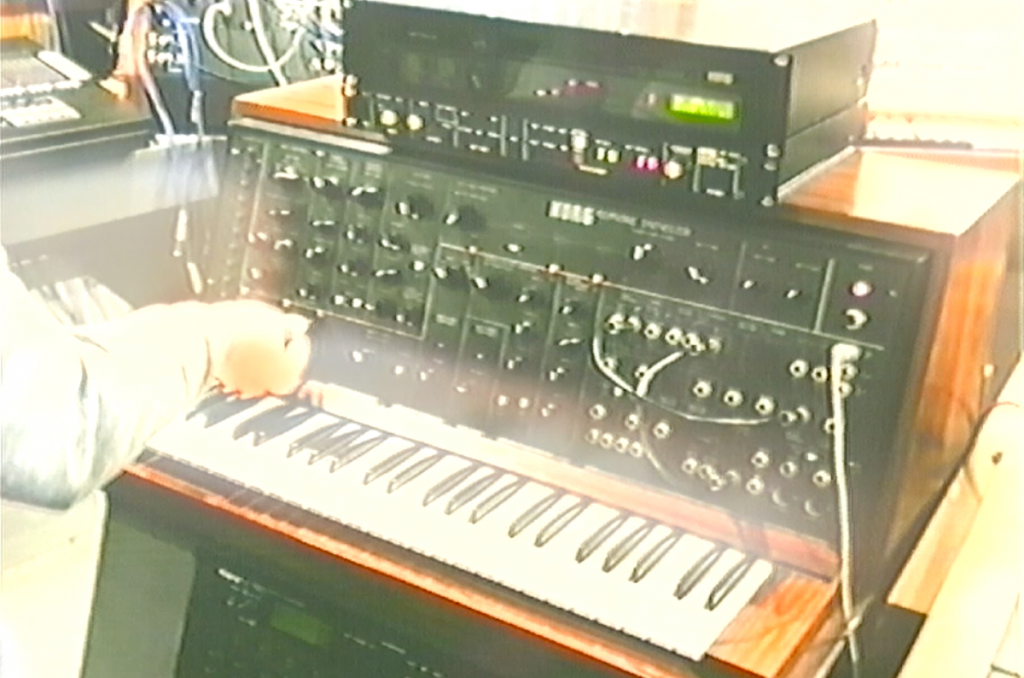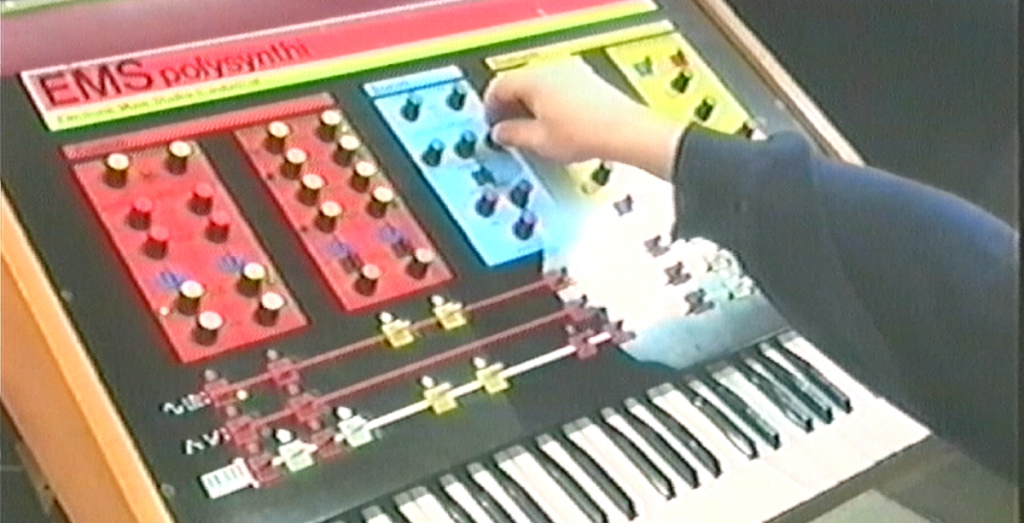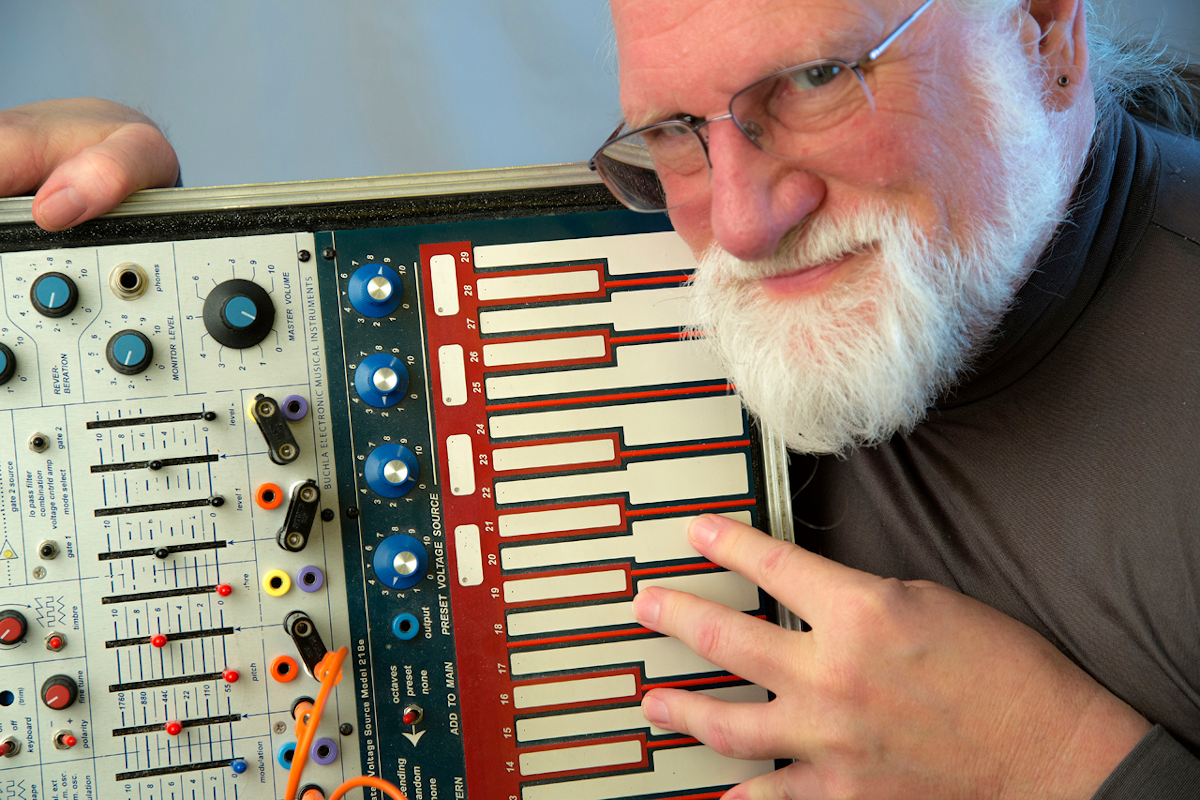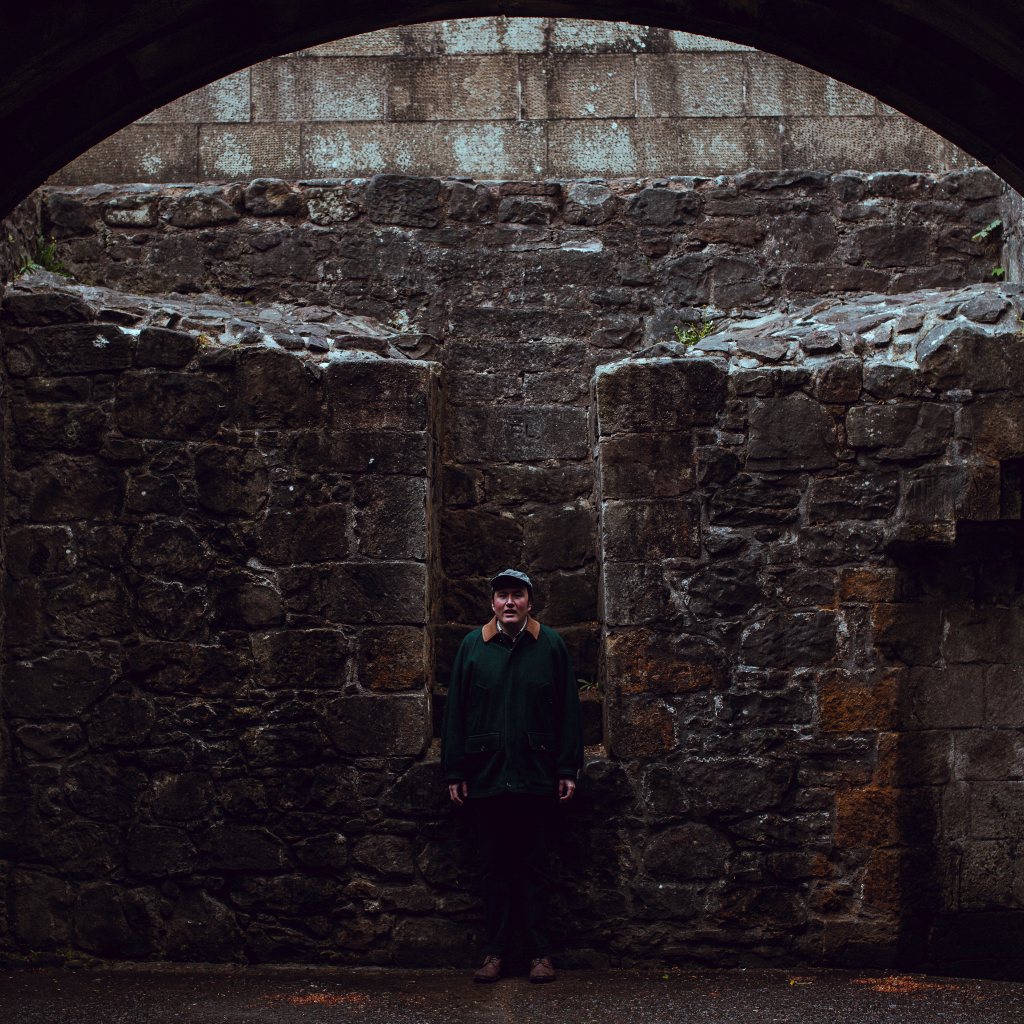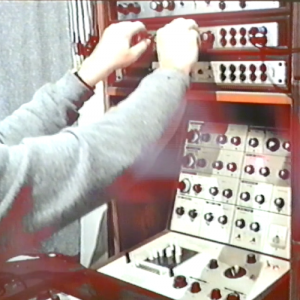 Benge (Ben Edwards) built his MemeTune studio as a haven and playground for his wondrous collection of vintage synthesizers. He has released numerous solo albums as well as forming the duo Tennis with Douglas Benford of Sprawl club and label fame, and has branched out to curate the Expanding label.
Benge (Ben Edwards) built his MemeTune studio as a haven and playground for his wondrous collection of vintage synthesizers. He has released numerous solo albums as well as forming the duo Tennis with Douglas Benford of Sprawl club and label fame, and has branched out to curate the Expanding label.
Freq interviewed Ben about his session for Philippe Petit‘s Modulisme project, and he reveals a deep and lifelong fascination with the instruments and methodology since childhood, a passion that makes modular synthesis something of an obsession for him:
When did you first become aware of modular synthesis as a particular way of making music, whether as part of electronic music in general or more specifically as its own particular format, and what did you think of it at the time?
My parents ran a small independent school in the 1970s at our family home, and there was a music room with a strange modular synthesizer in it called The Black Box which I used to experiment with when I was about ten, maybe younger. It was given to the school by a family friend and was a small home-made box with oscillators, filters, ring modulators, envelopes, all patchable with banana cables. The lettering was all done with Dymo labels. Anyway, I used to be fascinated with that thing and play on it every evening.
There was also an electric organ with a built-in drum machine, and lots of xylophones, percussion instruments, and even a four-track tape machine that I used when I got a bit older — maybe around thirteen / fourteen. I set my first studio up in my bedroom when I was sixteen, and then when I moved into my first house I had my downstairs living room as my studio. Soon it took over my whole house / life.What was your first module or system?
Apart from the Black Box, I bought my first modular in about 1990 — a Mk1 EMS VCS3 with DK1 keyboard. Its actually a semi-modular system that uses a pin matrix to patch it. I got my first fully modular system in 1994, a Moog 3C.
How long did it take for you to become accustomed to patching your own synthesizer together out of its component parts?
I guess I knew my way around modulars from my experience with the Black Box as a young kid.
Do you prefer single-maker systems (for example, Buchla, Make Noise, Erica Synths, Roland, etc) or making your own modular synthesizer out of individual components form whatever manufacturer that match your needs.
I love using systems of one maker — I like to respect the designers original vision. I collect systems, and have vintage modulars made by Moog, Buchla (100, and a cloned 200 system), Serge, Polyfusion, Paia, ARP, Modcan, Formant, Roland (100M), Emu and Korg. I am obsessed with modular synths!East Coast, West Coast or No-Coast (as Make Noise put it)? Or is it all irrelevant to how you approach synthesis?
To me they are are all interesting and have their own quirks and characters.Do you tend to use pure modular systems, or do you bring in outside effect and devices when playing or recording?
I see the equipment in my studio as part of one big system, like the studio is really the instrument. Modular in essence is the idea of connectivity, interconnectivity, combining and recombining signals and shaping sound and composition in any way imaginable, and the better in tune with your surroundings you are, the more you can create your own unique voice.
I think the best thing in any studio is the patchbay, especially if you have thought through your setup so that everything can come and go properly though it. Modular synths fit into this way of working so well, but why stop with purpose-built modular gear — anything with an input and output can be connected to a patchbay and become part of a bigger system. To me, all production in the studio is part of this giant modular approach — that’s the idea behind MemeTune Studio — everything is connected up, from the synthesizers, sequencers, modular systems to the FX units, mixing consoles, computers and recorders.
Do you find that you record straight with no overdubbing, or do you end up multi-tracking and editing tracks in post-production?
It depends on the situation, but for this mix I used each system in one take. I set up a patch in advance and played the pieces in one pass, with no editing or overdubbing. Each track is a live performance on each system.Do you pre-patch your system when playing live, or do you tend to improvise on the spot?
See above.
Which module could you not do without, or which module do you you use the most in every patch?
I love sequencers, I hate playing keyboards! I am not a good player technically — and I don’t want to learn any time soon — so I prefer to use sequencers and automated composition techniques, or the computer sequencers. I use Digital Perfomer as my main tape recorder and MIDI sequencer / editor.
What do you think that can only be achieved by modular synthesis that other forms of electronic music cannot or makes harder to do?
Modular synths don’t have any presets, and for that reason you have to come up with something unique every time you use it. That’s the most important thing for me — to find your own unique voice, and make something new and never heard before.Have you used various forms of software modular (eg Reaktor Blocks, Softube Modular, VCVRack) or digital hardware with modular software editors (eg Nord Modular, Axoloti, Organelle), and if so what do you think of them?
I have used Reaktor, Kyma, Max, VCV Rack, and some dedicated computer systems such as the Fairlight CMI and Synclavier. I love them all! But there is something very special about being in front of a real modular system with patch cables — the physical experience is most gratifying.What module or system you wish you had?
I’m really lucky to have got into modulars at such a young age and at a time when people were not really in to them. I got a lot of gear really cheap or even free — people used to give me stuff so that it went to a good home rather than being thrown into a skip! So for that reason I don’t like lust after new stuff too much — I need to have time to use the things I already have.
Have you ever built a DIY module, or would you consider doing so?
Yes, I have dabbled with making a few things, but I’m not really good with a soldering iron — it doesn’t come naturally to me.Which modular artist has influenced you the most in your own music?
Perhaps Don Buchla — he was probably the most artistic of all the system makers — a true pioneer. And as an extension of that I would perhaps say Morton Subotnick and his first few Buchla-only albums — they still sound amazing today, and I go back to them all the time.
What have you been working on lately, and do you have any upcoming releases or performances?
I am always working on my own music — I release a lot of music, my solo albums go up on my Bandcamp page. I have an ongoing series called FORMS where I make an album on just one synthesizer or system. I have also just re-released my 2008 album Twenty Systems, twenty tracks made on twenty synths spanning twenty years (starting in 1967 with a Moog modular and going through to the late ’80s and the Kawai K5 digital additive system.Can you outline how you patched and performed your Modulisme session?
Each track was made on a different synthesizer, and played live in one take. So each one had a different method of patching. So for example, the Moog track uses 1/4 inch jack cables for most of its module connections, the EMS VCS3 uses a pin-matrix system, the ARP2500 uses a slider matrix and the Serge uses banana cables to accomplish its patching.They all have a different physical and conceptual way of making sounds, albeit along the same analogue subtractive synthesis lines. Some tracks (such as the EMS Polysynthi and Korg PS3100) were played live on the keyboards, while others (such as the Polyfusion, Formant and Paia tracks) were mainly created by using the mixers to bring sounds in and out by hand. On the Roland 100M track I used the keyboard arpeggiator, and quite a lot of the systems have built-in analogue sequencers (the Buchla 100, Buchla 200, Moog 3C, ARP2500, Serge Modular, Polyfusion, Paia, and Emu).
Usually it was a combination of a lot of things, sequencers, mixers, keyboards, LFOs, clock dividers and trigger busses, all going at the same time and interacting with each other.Who would your dream collaborator be for a Modulisme session or otherwise?
- Benge’s Bandcamp page
- MemeTune Studio and label
- Modulisme.

